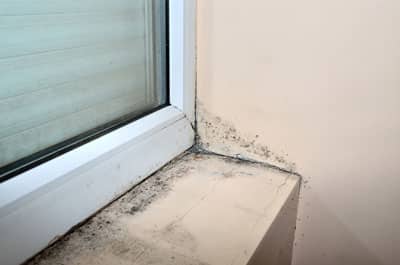After Mold Remediation Approaches for Clean Areas
After Mold Remediation Approaches for Clean Areas
Blog Article
Your Ultimate Guide to Message Mold Remediation Methods
Navigating the realm of post-mold removal methods is a meticulous process that demands attention to detail and a thorough understanding of the details entailed. In the aftermath of mold infestation, understanding just how to successfully eradicate the mold and stop its reoccurrence is extremely important for maintaining a healthy interior environment. From picking the best cleaning and disinfecting methods to executing approaches for long-term mold and mildew avoidance, each action in the remediation trip plays a crucial role in ensuring a successful outcome. As we start this exploration of post-mold remediation techniques, we will uncover the key techniques and finest practices that can assist you recover your area to its pre-mold problem and safeguard it against future mold hazards.
Understanding Post-Mold Remediation Process
After completing the mold and mildew remediation procedure, it is vital to comprehend the post-mold removal strategies that are required to ensure a efficient and extensive cleanup. When the mold has been removed, the following step includes cleansing and sanitizing the impacted areas to avoid any regrowth of mold and mildew. This includes using specialized cleaning representatives to clean down surface areas and eliminate any kind of remaining mold spores. It is important to dry out the area totally to dissuade the development of mold and mildew in the future (Post Mold Remediation Report). Proper ventilation and dehumidification can assist in this process.
Furthermore, conducting a last inspection post-remediation is important to make sure that all mold has been effectively eradicated. If the inspection exposes any lingering mold, additional remediation might be necessary.
Effective Cleaning and Decontaminating Methods

Protecting Against Future Mold Development

Value of Correct Air Flow
Correct air flow plays a vital function in stopping moisture build-up, an essential element in mold and mildew development within indoor environments. Reliable ventilation systems assist remove excess moisture from the air, minimizing the opportunities of mold spores finding the dampness they need to spread and sprout. Without ample ventilation, interior spaces can come to be a breeding place for mold, causing prospective health risks and structural damages.
By guaranteeing appropriate air blood circulation, ventilation systems can additionally aid in drying moist locations a lot more promptly after water damages or flooding incidents, even more deterring mold and mildew growth. Post Mold Remediation. Precede like bathrooms, attic rooms, kitchens, and cellars where dampness degrees tend to be greater, setting up and preserving reliable air flow systems is essential in preventing mold invasions

Monitoring and Maintenance Tips
Provided the crucial function that correct air flow plays in avoiding mold and mildew development, it is important to establish efficient monitoring and upkeep ideas to make sure the continued capability of ventilation systems. Monitoring moisture degrees within the building is also essential, as high humidity can add to mold and mildew development. By remaining alert and aggressive to the condition of air flow systems, residential property proprietors can effectively minimize the threat of mold and mildew regrowth and maintain a healthy indoor setting.
Conclusion
Finally, post-mold removal methods are necessary for making sure a tidy and safe environment. Recognizing informative post the procedure, applying efficient cleansing and sanitizing approaches, avoiding future mold and mildew growth, maintaining appropriate air flow, and regular monitoring are all crucial steps in the removal procedure. By complying with these standards, you can effectively remove mold and mildew and avoid its return, working or promoting a healthy living room for all owners.
In the after-effects of mold problem, understanding exactly how to efficiently get rid of the mold and mildew and avoid its reoccurrence is vital for maintaining a healthy indoor setting. When the mold and mildew has been removed, the next action involves cleaning and sanitizing the influenced areas to prevent any kind of regrowth of mold - Post Mold remediation cleaning. After removing noticeable mold and mildew growth, it is vital to cleanse all surfaces in the damaged area to get rid of any kind of continuing to be mold spores. To further enhance mold and mildew avoidance procedures, it is essential to address underlying concerns that initially led to mold development.Given the important function that correct air flow plays in protecting against mold growth, it is necessary to establish efficient surveillance and maintenance tips to guarantee the continued capability of ventilation systems
Report this page